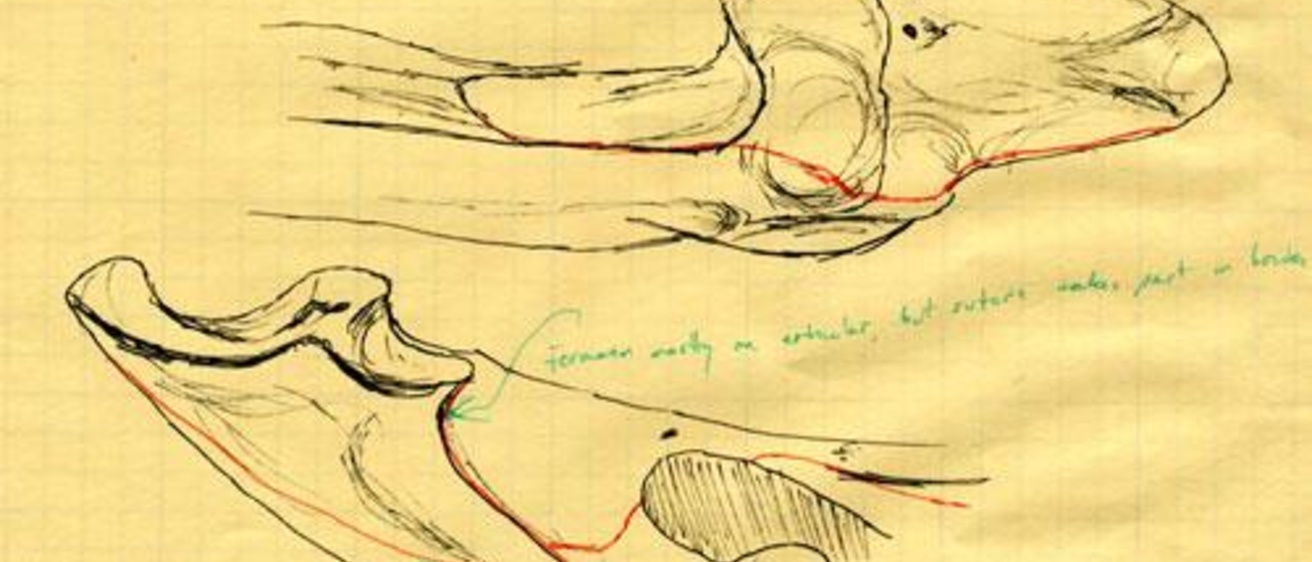Chris Brochu (Fellow-in-Residence, Spring 2011) has looked at crocodile fossils in Namibia, Italy, and China. Once in Nairobi, the lights went out and he worked by flashlight. During a visit to a collection of crocodile collectors in France, the associate professor in Geoscience photographed fossils in one member’s backyard while enjoying a bottle of local wine.
Brochu didn’t begin graduate school with the intention of becoming a foremost expert on crocodiles. As he realized, though, that no one was studying the order of Crocodilia, he saw an opportunity.
“I fell in love with the under appreciated diversity of crocs,” says Brochu. “People tend to think they are a living fossil that haven’t changed since the days of the dinosaurs.” His work has proven that this is far from true. He has discovered hoofed crocodiles, horned crocodiles, and many others that are not understood. They are unique as a family of organism that has a limited number of living species from which to collect samples, but also a rich fossil record.
It’s those fossils that Brochu chases, traveling the globe (“I’m hoping to get to Australia soon, and there’s a new find in Thailand that I need to check out”) to research museum collections. His main tools are a digital camera and a notebook, in which he draws specimen. “Not only does drawing help me to understand what I see better, but it forces me to think in 3-D and really learn the anatomy.”
On a research trip, it’s not unusual for Brochu to average discoveries of two to three new crocodilian species a week. As one of the few people in the world looking at wide sampling of fossils from this family on a regular basis, Brochu also sometimes manages to make links that others don’t see.
While looking at the remains of modern crocodiles on a trip to New York and then, the next week, at fossils, a curator at the museum showed him fossils that had perplexed the museum staff. “I flipped over the jaw plate and looked at the palate and recognized it.” He ran upstairs to the modern section, borrowed a jaw from a dwarf species and took it back down to compare side by side with the extinct fossil. Instantly, he and his fellow researcher could see that the two were closely related.
Brochu spent the 2011 spring semester at the Obermann Center revising the standard reference on the fossil record of crocodyliforms, i.e., alligators, crocodiles, and their extinct relatives. The most recent version was last revised in the early 1970s.
